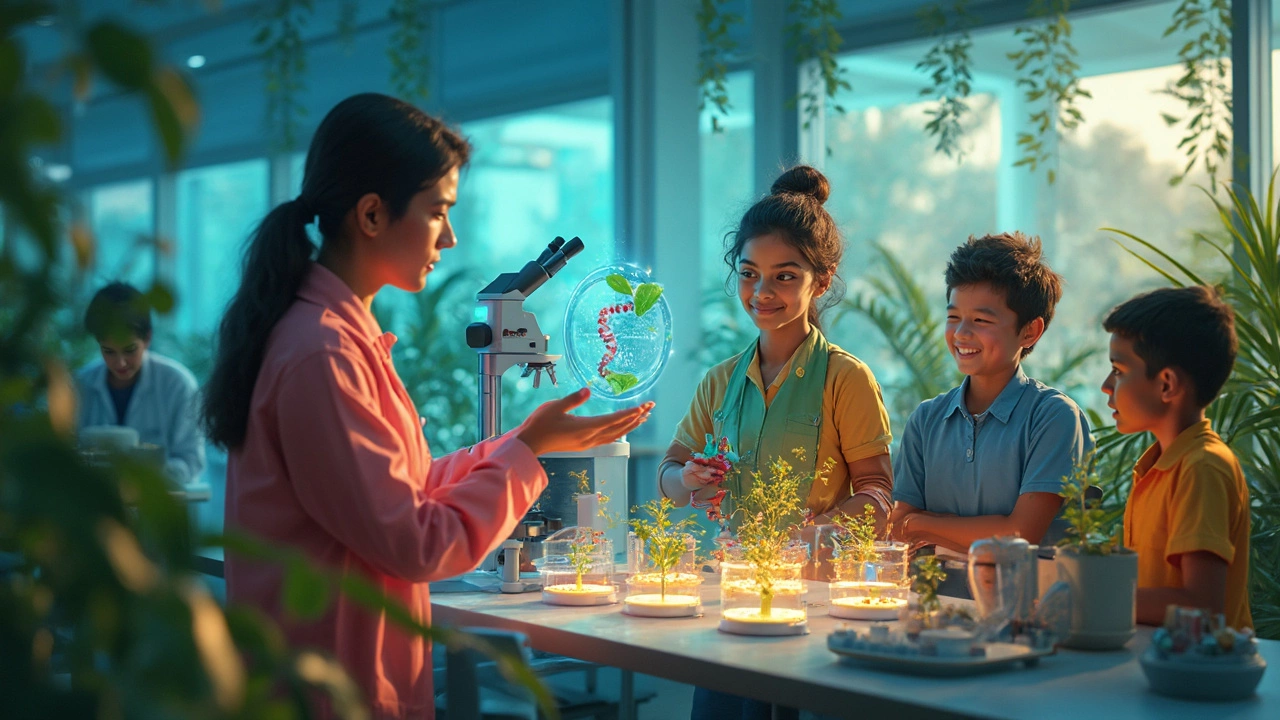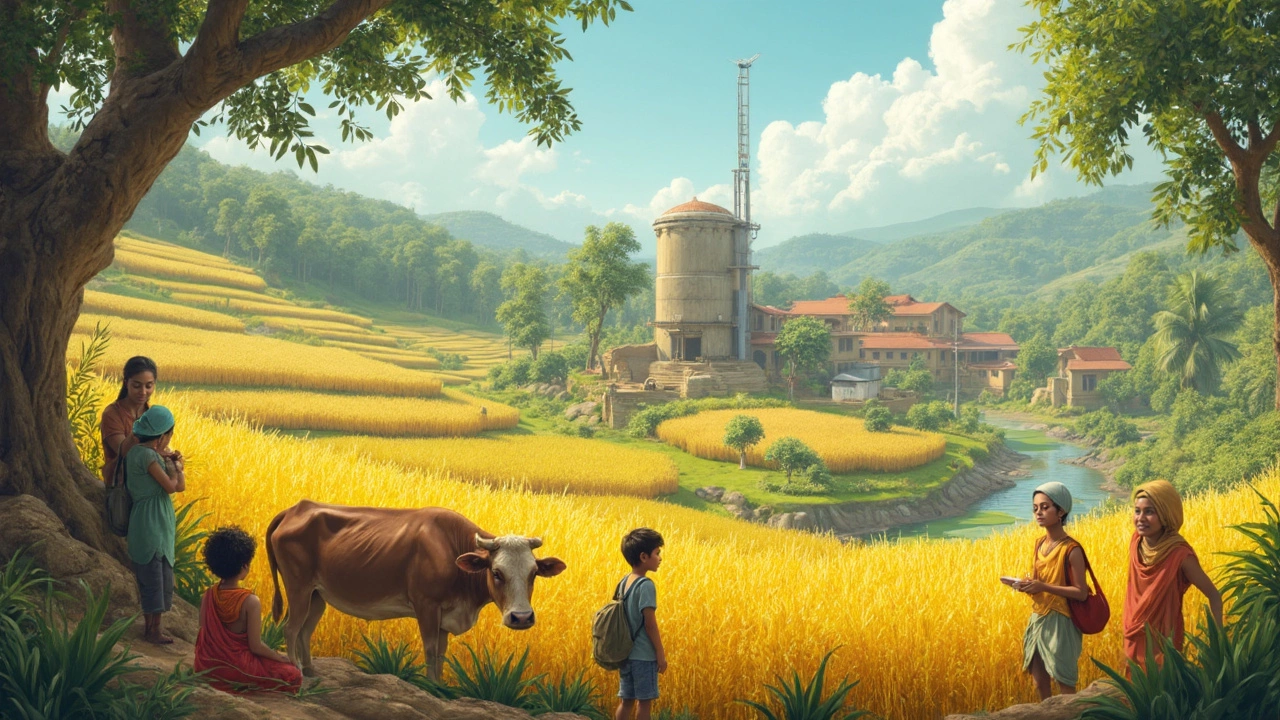Biotechnology's Global Revolution: How Medical Innovations Are Healing Our World
 Jul, 2 2025
Jul, 2 2025
Picture this: Just last year, scientists in Cambridge announced a technique that could fix a genetic disorder in a human embryo. Pretty wild, right? Now, imagine the ripple effect of breakthroughs like that on our lives, our health, even what’s in our refrigerators. That’s exactly what biotechnology’s been doing behind the scenes—reshaping our world. Sure, people hear the term and maybe think test tubes, but what’s going on is way bigger and closer to home than most imagine. Let’s dig into the ways modern biotechnology is quietly healing the world, one human problem at a time.
The Medical Miracle Factory: From Insulin to mRNA
Nothing has changed the face of medicine quite like biotechnology. Take diabetes, for example. Before the 1980s, insulin came from pig and cow pancreases. It was expensive, sometimes allergic, and always in short supply. Then, in 1978, a handful of researchers managed to coax bacteria into making human insulin. By 1982, Humulin hit the pharmacy shelves, the world’s first genetically engineered drug. That single act has since saved, literally, millions of lives. Today, almost every diabetic taking insulin is relying on biotech bacteria.
And insulin is just the tip of the iceberg. mRNA vaccines, the unsung heroes of the COVID-19 pandemic, only exist because scientists figured out how to teach our cells to recognize a virus blueprint. Both Moderna and Pfizer’s vaccines, rolled out in late 2020, became the fastest-developed vaccines in medical history. A study published in The Lancet in 2023 put their global death prevention estimate at almost 20 million. Think about that: a few strands of synthetic RNA, crafted in the lab, put a global pandemic on a leash.
But it’s not all about pandemics. Biotech is also rewriting cancer treatment. CAR-T therapy sounds like something out of a sci-fi novel—doctors literally reprogramming a patient’s immune cells to hunt cancer. In 2017, the FDA greenlit the first CAR-T therapy, Kymriah, to treat certain kinds of leukemia. By 2024, over 15,000 patients in the US had received some version of this living drug, with many seeing stubborn cancers simply melt away.
| Breakthrough | Year Introduced | Lives Impacted |
|---|---|---|
| Recombinant insulin | 1982 | Millions annually |
| mRNA vaccines (COVID-19) | 2020 | Estimated 20 million deaths prevented (2020–2023) |
| CAR-T cell therapy | 2017 | 15,000+ patients (US alone by 2024) |
It’s hard not to be blown away by how quickly the gap is closing between ‘incurable’ and ‘curable’. My wife, Maya, still remembers her grandmother’s hospital visits for Type 1 diabetes; today, her youngest cousin manages the same disease with a little device, programmed by human DNA repurposed through biotech. That’s more than progress—it’s personal.
Feeding Billions: The Biotech Fields
A lot of folks don’t realize that the food on our tables is part of this revolution. Genetically modified (GM) crops have become the backbone of global food security. Let’s look at a basic crop: rice. Rice feeds more than half the planet. Yet millions of children in Asia suffer from vitamin A deficiency linked to blindness and early death. Enter ‘Golden Rice’—a biotech invention spliced with genes from daffodils and bacteria that supercharge its vitamin A content. In 2022, Bangladesh became the first nation to approve it for farmers, directly tackling a childhood malnutrition crisis that kills 1.3 million children a year worldwide.
Now, let’s talk numbers. According to a 2024 UN report, 190 million hectares worldwide are dedicated to genetically modified crops. Roughly 70% of the soybeans, 30% of the maize, and a big chunk of cotton picked globally come from biotech seeds. These offer more than higher yields: they resist insects without barrels of spray, shrug off drought, and even cut down on greenhouse gases. In India, for instance, Bt cotton slashed pesticide use by more than 50% from 2000 to 2020—meaning safer fields for farmers, cleaner water, and cheaper clothing for shoppers in Liverpool… and everywhere else.
Biotechnology is helping crops adapt to the climate crisis in ways no traditional breeding method ever could. Blossom rot, viral wilt, unstoppable fungi—diseases that once obliterated entire harvests can now be tamed with a tweak in a plant’s genes. If you enjoy avocados, thank plant biotechnologists who are fighting to save them from extinction by developing rootstocks that resist new pests. Still, the whole topic sparks debate, especially in places like Europe, where people, including some of my Liverpool neighbours, are divided on ‘GM food’ labels. But even here, biotech methods—such as gene editing without foreign DNA—are quietly improving strawberries and tomatoes behind the scenes.
| Crop | Biotech Trait | Impact |
|---|---|---|
| Golden Rice | High Vitamin A | Reduces blindness & mortality in Asia |
| Bt cotton | Pest Resistant | Cuts pesticide usage, boosts farmer income |
| Drought-tolerant maize | Water-efficient | Secures harvests during dry spells |
Thinking about how food security has improved thanks to *biotechnology* is a reminder that some of science’s greatest victories sneak onto our plates without many of us even noticing.

Diagnosing the Future: How Biotech Hunts Disease Early
Everyone’s got a story about a friend or loved one who “caught it early,” whether it’s breast cancer, hepatitis, or a genetic disorder. Early diagnosis saves lives—it’s that simple. Biotechnology has handed doctors new eyes and ears. Gene sequencing, unthinkable for everyday doctors twenty years ago, is now routine. My cousin in Mumbai recently got a cancer risk profile thanks to a $100 gene panel. Genetic testing companies—23andMe, AncestryDNA—have put millions of people in touch with their own health risks and family histories.
But forget the consumer kits for a sec. Hospitals are now using blood tests to spot cancer years before it becomes deadly. Liquid biopsies check for DNA shed by tumors in the blood. According to a study in Nature (December 2023), these tests detect lung cancer two years earlier than traditional scans for high-risk adults. That means earlier chemo, less severe surgeries, and fewer funerals—hard to argue with that kind of impact.
Biotechnology is making a dent in infectious disease, too. In 2024, Liverpool’s Alder Hey Hospital began rolling out CRISPR-based rapid TB diagnostics. Tuberculosis is tricky; it takes weeks to confirm the bug from a sputum sample. With CRISPR tech, doctors can confirm a case in under two hours and know if it’s drug-resistant. This isn’t some lab curiosity—it means faster isolation, quicker decisions, and lives saved right here in my city.
For rare diseases, where kids often spend years bouncing from test to test, DNA sequencing cuts down the struggle to a matter of days. The NHS’s Genomic Medicine Service runs whole-genome sequencing as standard for children with unexplained disorders. Suddenly, rare isn’t hopeless.
The roadmap ahead points straight at precision medicine—an era where your exact genes dictate what drugs work for you. Imagine personalized cancer treatment plans, customized cholesterol meds, or even gene therapies tweaked to the mutation in your DNA. Biotech companies have already started designing drugs to match one-in-a-million genetic diseases, not just blockbusters that work for everyone. The hardest trick? Scaling what’s possible in research for every patient, everywhere.
Biotech and Our Planet: Cleaning Up the Mess
The conversation about healing the world often brings up the environment. Biotech is shoulder-deep in cleaning up contamination, turning waste into fuel, and preserving endangered species. Remediation once meant digging up toxic soil or flushing harmful chemicals out of water. Now, scientists use engineered ‘superbugs’ that chow down on oil spills, plastics, and heavy metals. The 2010 Deepwater Horizon spill inspired a wave of research: by 2025, dozens of biotech firms were deploying bacteria that eat hydrocarbons, helping clean oceans and wetlands a lot faster than chemical methods ever could.
Looking closer to home, household composting might get a futuristic twist thanks to biotech enzymes. A company in France recently launched a product that can break down plastic packaging in compost bins, not just industrial plants, slashing plastic waste in ordinary family kitchens. One food factory near Liverpool imported similar biotech solutions, turning food waste directly into clean biogas for heating.
Conservationists are also banking on biotech for species revival. The black-footed ferret, once vanished from the wild, has made a comeback thanks to cloning and CRISPR editing. Ecologists in Australia are using gene drives—a genetic trick—to curb invasive mice that devastate crops and native wildlife. It’s a heated debate; some say don’t touch nature, but for others, these are the only options left for saving certain animals and entire ecosystems.
| Problem | Biotech Solution | Real-World Note |
|---|---|---|
| Oil Spill Cleanup | 'Oil-eating' bacteria | Used in Gulf of Mexico, 2010 |
| Plastic Waste | Enzymatic Degradation | Compost bin enzymes, 2024 (Europe) |
| Invasive Species | Gene drives | Trialed in Australia |
| Wildlife Conservation | Cloning & CRISPR | Black-footed ferret revival, US |
You can see the beginnings of an entirely different relationship with nature, powered by information and innovation, not just hope and prayer. It’s not a perfect picture yet, but the pace is staggering.

What’s Next? Ethics, Risks, and Everyday Life
With all the promise, there’s no denying the tough questions. Should we edit human embryos to erase disease? Who gets to decide if gene drives are set loose on wildlife? Back in 2023, several countries—including the UK—set up biotech ethics councils to keep pace with these dilemmas. The Nuffield Council on Bioethics in London called it “the world’s fastest-changing medical toolkit,” and warned against leaving the public out of the conversation.
It’s way easier to trust biotechnology when you see it heal a neighbor or feed a nation—or when your dad beats cancer thanks to cellular therapies. But fears and myths cling tight, especially online. The key is clarity and transparency. Scientists need to show their work, regulators need to keep their standards solid, and the public (us!) needs a seat at the table.
A good tip for anyone: ask where your medicine, food, or energy really comes from. If you’re curious about GMOs or genetic testing, look for peer-reviewed sources—anything published by the NHS, US FDA, or similar organizations tends to be straight-shooting and accessible. Don’t be afraid to ask your doctor or even your local grocer about how biotech shapes your choices. The more you dig, the more you realize how ordinary it’s become. The gene-edited tomatoes I saw at the Liverpool farmer’s market last week taste sweeter, stay fresh longer, and traveled less. That’s the future, hiding in plain sight.
So, when someone asks if biotechnology has healed—or is healing—the world, the answer’s loud and complicated, but always leaning toward ‘yes’. From hospital beds to kitchen tables and wild animal preserves, new genetic knowledge powers a growing list of real-world fixes that change lives daily. As risks and choices grow, so does hope—and if you’re reading this with your health, belly full, and a safe backyard, chances are you’ve already been touched by biotech, whether you noticed or not.